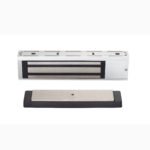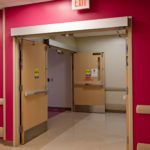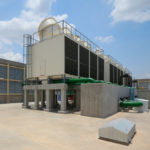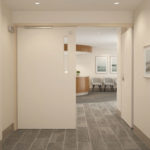 One of the most fundamental requirements related to access control products can also be one of the most confusing – the functions of fail safe and fail secure electrified hardware. Without an understanding of these two functions and how the hardware operates, code requirements may be interpreted incorrectly and security negatively impacted.
One of the most fundamental requirements related to access control products can also be one of the most confusing – the functions of fail safe and fail secure electrified hardware. Without an understanding of these two functions and how the hardware operates, code requirements may be interpreted incorrectly and security negatively impacted.
Here are a few of the frequently asked questions related to fail safe and fail secure electrified hardware:
What is the difference between fail safe and fail secure electrified hardware?
For most access control doors, the electrified lock is used to limit access/ingress, and the hardware allows free egress at all times. For these doors:
- Fail safe products are unlocked when power is removed. Power is applied to lock the door.
- Fail secure products are locked when power is removed. Power is applied to unlock the door.
- Fail safe / fail secure typically refers to the status of the secure side (key side, outside) of the door.
- Most products provide free egress whether they are fail safe or fail secure (see below for some exceptions).
This Decoded article addresses fail safe and fail secure hardware in greater detail, and there is a short video here on this topic.
When electrified hardware is installed on a door in a means of egress, is it always required by code to be fail safe?
No – it is a common misconception that all egress doors must have fail safe hardware. The most common type of access control door is one where the electrified hardware limits access/ingress, but has no impact on egress. For these doors, the hardware on the egress side of the door operates the same way mechanical hardware does, and the hardware on the access/ingress side of the door can be fail secure. When power is cut, the door is secure on the access/ingress side. Applying power allows access.
These “normal locking arrangements” are required to comply with the same code requirements as mechanical hardware: one motion to unlatch the door to exit (with some exceptions), no key, tool, special knowledge or effort for egress, no tight grasping, pinching, or twisting of the wrist, and releasing hardware mounted between 34-48 inches above the floor (with some exceptions). There is more information about normal locking arrangements in this Decoded article – Decoded: Access Control Update.
Which function is most common – fail safe or fail secure?
When electrified hardware is used to control access/ingress, and does not affect egress, fail secure hardware is much more common than fail safe hardware. With fail secure hardware on the access/ingress side of the door, the door is secure even during a power failure. If fail safe hardware is used on an exterior door, the door will be unlocked and allow access to the building whenever power is cut.
When electrified hardware has an effect on egress, it is classified as one of the special locking arrangements. The model code sections addressing special locking arrangements typically require hardware to unlock upon fire alarm and/or upon power failure; this hardware must be fail safe, allowing free egress (not free access). Some examples of hardware that has to allow free egress upon power failure: delayed egress locks, controlled egress locks in health care facilities, electromagnetic locks, and elevator lobby locks. With doors used for stairwell reentry, fail safe hardware is required on the stairwell side of doors leading from the tenant floors to the stairwell. The special locking arrangements page on iDigHardware includes more information on each of these systems.
Can fail safe electric strikes be used on interior stairwell doors for reentry?
No, not if the stairwell door is fire rated. Most interior doors leading to stairwells are required to be fire door assemblies, also known as opening protectives because they protect the openings in a fire resistant enclosure. According to the International Building Code (IBC), electric strikes installed as part of a fire door assembly must be listed to UL 10C or NFPA 252, to demonstrate that they are suitable for this purpose. Fail safe electric strikes are not listed for use as a component of a fire door assembly – electric strikes used on fire doors must be fail secure.
The IBC requires almost all interior stairwell doors to allow building occupants to leave a stairwell if it becomes compromised during a fire. When these fire doors are locked or lockable, they must be remotely unlocked; electrified hardware is required. To accomplish this remote unlocking for stairwell reentry, fail safe locks or fail safe trim for fire exit hardware must be used.
For answers to more frequently asked questions, check out these recent FAQ posts:
- FAQs About Roof Doors
- FAQs About Smoke Barrier Doors in Health Care Facilities
- FAQs About Electromagnetic Locks
- FAQs About Low-Energy Automatic Operators
- FAQs About Health Care Corridor Doors
- FAQs About Controlled Egress Locks in Health Care Facilities
You need to login or register to bookmark/favorite this content.









Leave A Comment